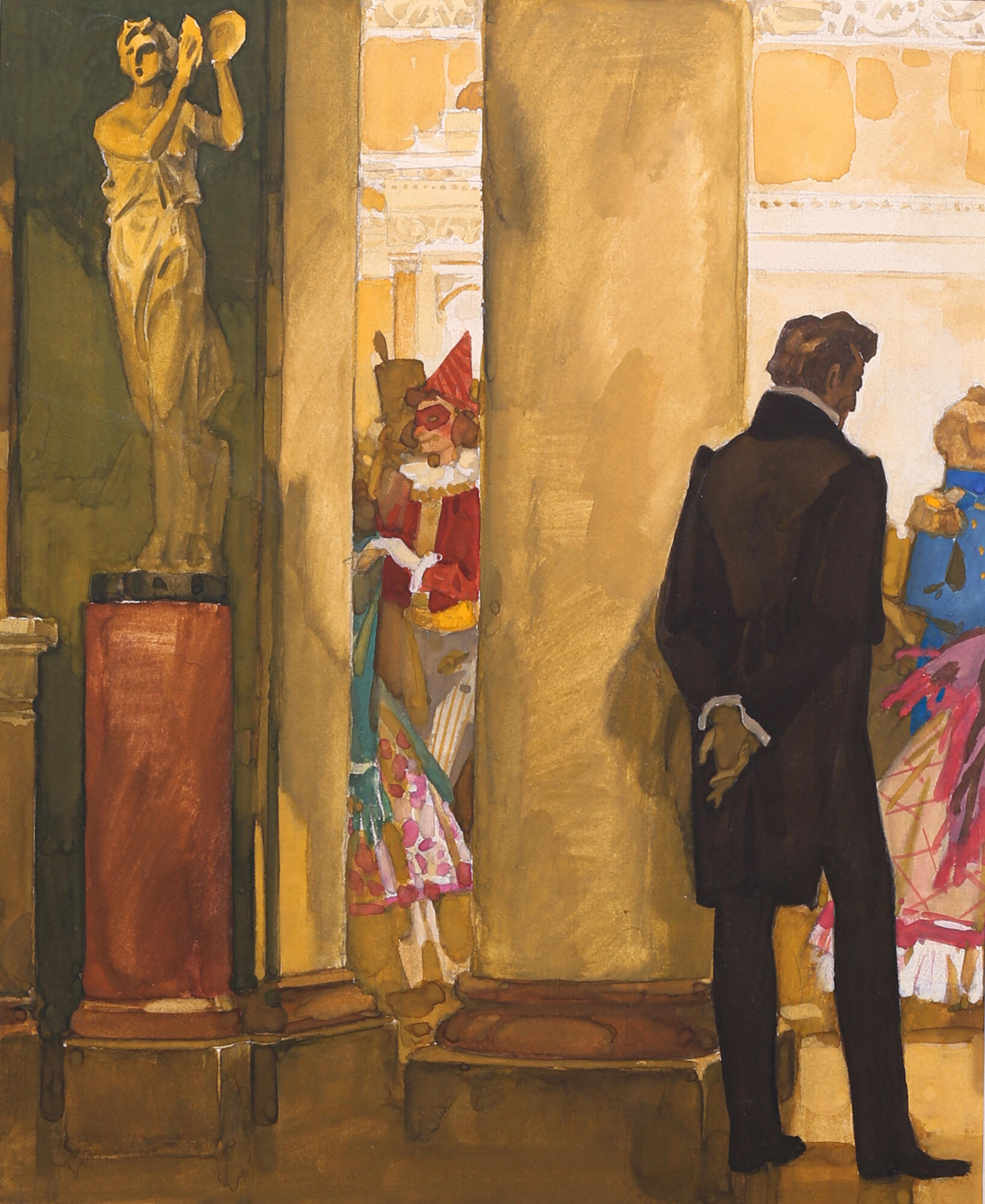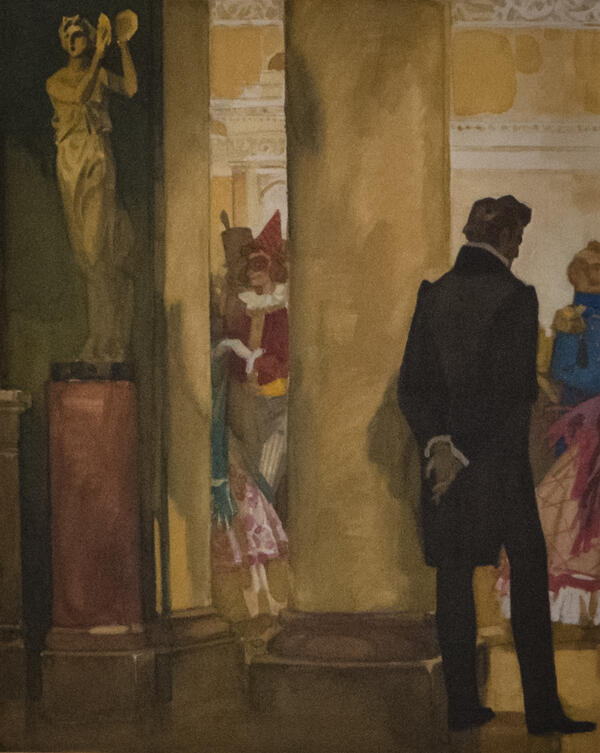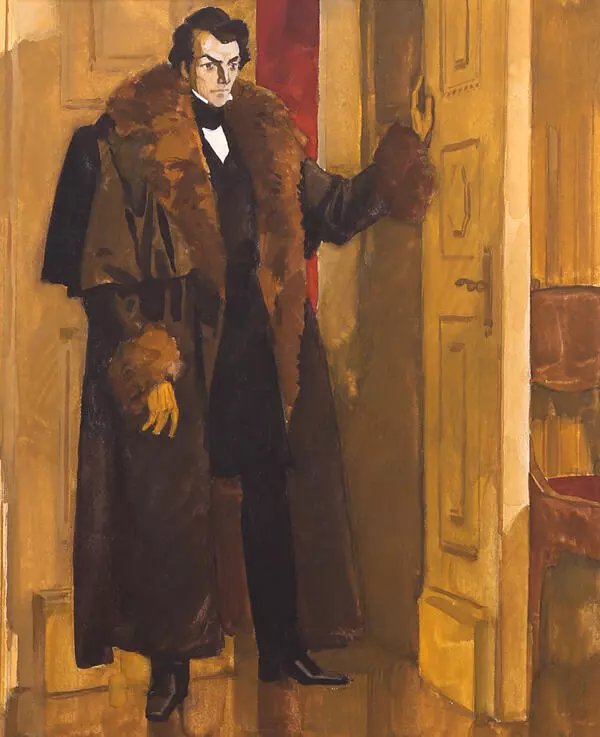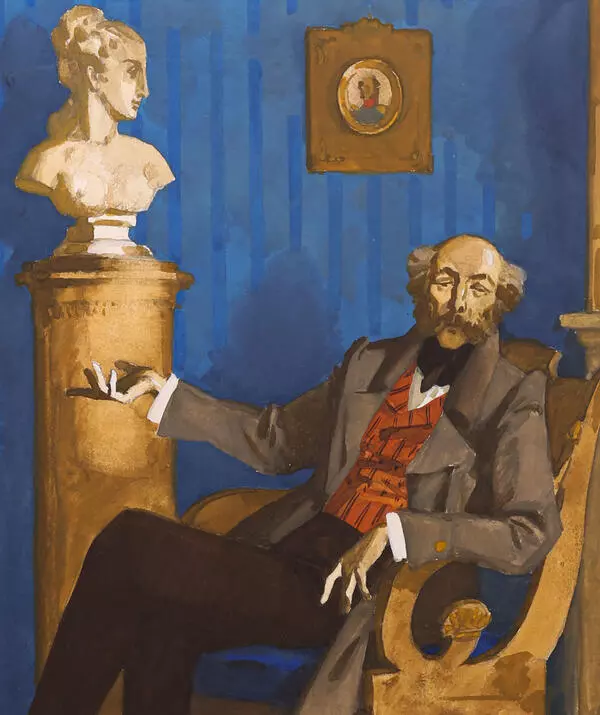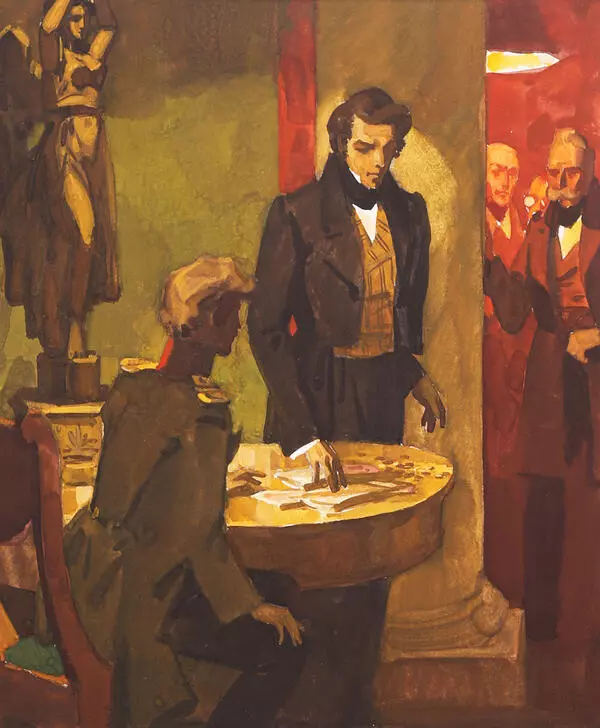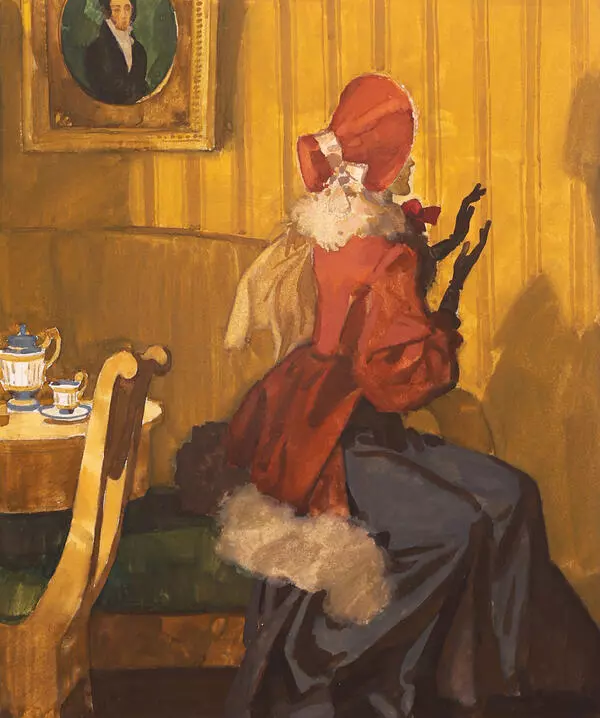Vladimir Petrovich Panov studied at the book workshop under Professor Boris Alexandrovich Dekhteryov, who graduated from VKhUTEIN — the Higher Artistic and Technical Institute — and collaborated with theaters. In 1945, Boris Dekhteryov was appointed the head artist of the “Detskaya Literatura” publishing house. In 1947, he became a winner of the Stalin Prize. In 1966, Dekhteryov received the title of People’s Artist of the RSFSR.
Boris Dekhteryov’s student Vladimir Panov worked for the Detgiz while still a student; moreover, in 1955, he started illustrating books for the “Detskaya Literatura” publishing house. Between 1985 and 1986, Vladimir Panov was the head artist of that establishment.
Panov’s illustrations are considered very skillful. The artist worked on illustrations for the works of Russian and foreign classics, such as Alexander Herzen, Nikolay Chernyshevsky, Ivan Turgenev, Fyodor Dostoevsky, and Honoré de Balzac. Panov’s style is about paying great attention to the works’s characters, depicting them in close-up, and striving to show their development.
The graphic artist uses a vertical composition to express his vision of Mikhail Lermontov’s play. The illustration shows the figure of Arbenin at the masquerade. The foreground and background are created by columns dividing the hall.
Arbenin is depicted from behind standing next to a column on the right side of the composition. His hands are behind his tense back, and his head is slightly bent forward. The background shows the splendorous masquerade. The setting could be from the third subscene of the second scene in the first act. Deep in thought, Arbenin says:
Boris Dekhteryov’s student Vladimir Panov worked for the Detgiz while still a student; moreover, in 1955, he started illustrating books for the “Detskaya Literatura” publishing house. Between 1985 and 1986, Vladimir Panov was the head artist of that establishment.
Panov’s illustrations are considered very skillful. The artist worked on illustrations for the works of Russian and foreign classics, such as Alexander Herzen, Nikolay Chernyshevsky, Ivan Turgenev, Fyodor Dostoevsky, and Honoré de Balzac. Panov’s style is about paying great attention to the works’s characters, depicting them in close-up, and striving to show their development.
The graphic artist uses a vertical composition to express his vision of Mikhail Lermontov’s play. The illustration shows the figure of Arbenin at the masquerade. The foreground and background are created by columns dividing the hall.
Arbenin is depicted from behind standing next to a column on the right side of the composition. His hands are behind his tense back, and his head is slightly bent forward. The background shows the splendorous masquerade. The setting could be from the third subscene of the second scene in the first act. Deep in thought, Arbenin says:
